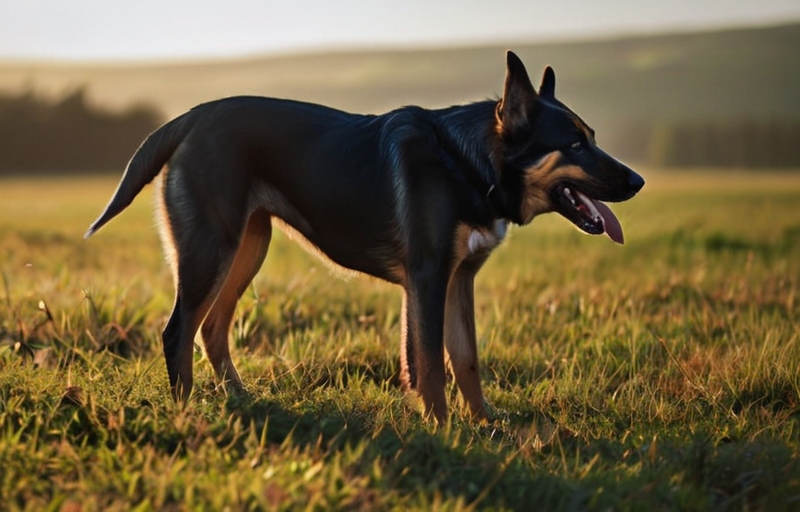Explore the fascinating world of hormonal influences on canine mating. From the intricacies of the estrous cycle to the role of testosterone, discover how hormones shape the mating process. Learn about potential disorders, management strategies, and the importance of hormonal health for your furry friends.
Hormonal Influences on Canine Mating
Introduction
Importance of Understanding Canine Reproduction
Understanding the reproductive cycle of dogs is crucial for various reasons. Firstly, it helps dog owners make informed decisions regarding breeding. Knowledge about the hormonal changes during mating can also aid in identifying signs of heat or fertility in female dogs. Additionally, understanding canine reproduction can help prevent unwanted litters and contribute to responsible pet ownership.
The Menstrual Cycle in Female Dogs

A. Proestrus: The Prelude
Proestrus marks the beginning of the estrous cycle in female dogs. During this phase, the ovaries start producing estrogen, preparing the reproductive tract for mating. Signs of proestrus include vaginal bleeding and swelling of the vulva. While female dogs may attract male attention during this time, they are not yet receptive to mating.
B. Estrus: The Peak Fertility Phase
Estrus, also known as “heat,” is the phase of the estrous cycle when female dogs are fertile and receptive to mating. Estrogen levels peak, triggering ovulation. Signs of estrus include changes in behavior, such as increased friendliness and flagging (lifting the tail to the side). This is the optimal time for breeding if pregnancy is desired.
C. Diestrus: Post-Mating Hormonal Changes
Diestrus follows estrus and encompasses the period after mating. If fertilization occurs, progesterone levels rise to support pregnancy. If the female dog is not pregnant, diestrus transitions into anestrus, a period of reproductive inactivity. During diestrus, hormonal changes prepare the uterus for potential pregnancy or return to normalcy if mating doesn’t result in fertilization.
Male Canine Hormonal Dynamics

A. Testosterone and Sexual Drive
Testosterone plays a crucial role in male canine reproductive behavior. It is responsible for libido, aggression, and sperm production. Elevated testosterone levels during mating season drive male dogs to seek out and mate with receptive females. Neutering reduces testosterone levels, which can affect mating behavior and reduce the risk of certain health issues.
B. Pheromones and Attraction
Pheromones are chemical signals released by animals to communicate with others of the same species. Female dogs in heat release pheromones that attract male dogs. These pheromones signal the male dog’s brain, triggering mating behavior. Pheromone-based products are sometimes used to manage mating-related behavior or attract males for breeding purposes.
Mating Tie: Hormonal Synchronization

A. Oxytocin Release
Oxytocin, often called the “love hormone,” is released during mating and plays a crucial role in bonding. It is responsible for the mating tie, a physical connection between the male and female dogs that occurs after mating. Oxytocin promotes trust, social bonding, and maternal behavior in both males and females.
B. Vasopressin’s Role
Vasopressin is another hormone involved in the mating tie. It regulates water balance and blood pressure, but it also influences social behavior and pair bonding in mammals. Vasopressin levels increase during mating, contributing to the duration and strength of the mating tie. This hormonal synchronization helps ensure successful fertilization and enhances bonding between the mating pair.
Reproductive Disorders and Hormonal Imbalances
Infertility Issues
Hormonal imbalances can lead to infertility in male and female dogs. In females, conditions such as anestrus or persistent estrus can disrupt the reproductive cycle. In males, low sperm count, poor sperm motility, or erectile dysfunction may result from hormonal imbalances. Addressing underlying hormonal issues is essential for managing infertility and improving reproductive success.
Hormonal-Based Diseases
Certain diseases in dogs are influenced by hormonal imbalances. Conditions such as hypothyroidism, hyperadrenocorticism (Cushing’s disease), or diabetes mellitus can affect reproductive health and overall well-being. Proper diagnosis and management of these hormonal disorders are critical for maintaining the health and fertility of affected dogs.
Managing Hormonal Influences
Nutrition and Hormonal Health
Nutrition plays a significant role in maintaining hormonal balance in dogs. Providing a balanced diet with essential nutrients, vitamins, and minerals supports overall health, including reproductive function. Specific dietary supplements may also help regulate hormones and improve fertility in breeding dogs.
Veterinary Interventions
Veterinary care is essential for managing hormonal issues in dogs. Veterinarians can diagnose hormonal imbalances through blood tests, hormone level evaluations, and physical examinations. Treatment options may include hormone replacement therapy, medication, or surgical interventions, depending on the underlying cause of the imbalance.
Conclusion
Understanding the intricate interplay of hormones in canine mating is essential for dog owners and breeders alike. From the hormonal changes during the estrous cycle to the role of testosterone in male behavior, hormones shape every aspect of the mating process. By recognizing the signs of hormonal imbalances and seeking veterinary care when needed, dog owners can ensure the reproductive health and well-being of their beloved pets.
FAQs:
Q: Can hormonal imbalances affect a dog’s overall health?
Yes, hormonal imbalances can lead to various health issues in dogs beyond just reproductive concerns.
Q: How long does the mating tie typically last?
The duration of the mating tie can vary but usually lasts between 5 to 30 minutes.
Q: Is it normal for female dogs to reject mates during certain stages of the estrous cycle?
Yes, it’s normal for female dogs to display selective behavior during different phases of their reproductive cycle.
Q: Can hormonal disorders be prevented through proper care and diet?
While not all hormonal disorders can be prevented, a balanced diet and proper care can contribute to overall hormonal health.
Q: When is the best time for breeding female dogs for a successful pregnancy?
The optimal time for breeding is usually during the estrus phase when the female is most fertile.

1 thought on “Hormonal Influences on Canine Mating: A Comprehensive Overview”